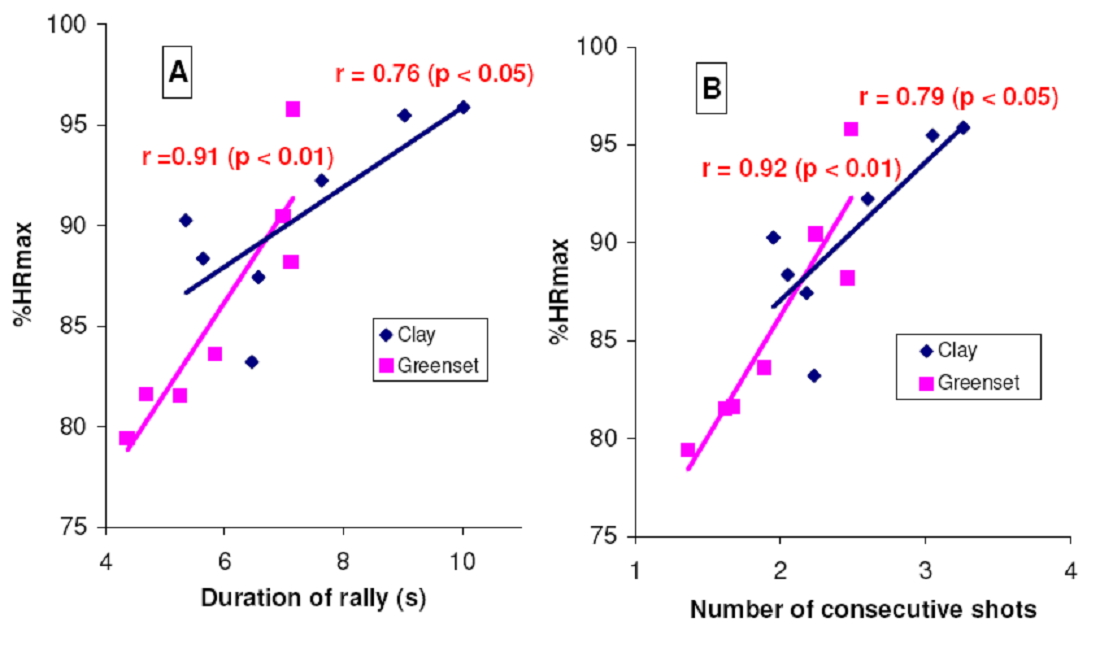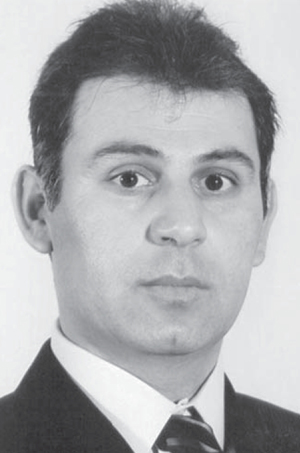THE EFFECT OF TENNIS COURT COVERING ON PLAYING PHYSIOLOGICAL AND TECHNICAL ASPECTS OF YOUNG TENNIS PLAYERS
Фотографии:
ˑ:
Al Khalili Mohaned, associate professor, Ph.D.
Russian state university of physical culture, sport, youth and tourism, Moscow
Key words: tennis coverings and its effect, physiological parameters of tennis players, game technical characteristics, correlation of duration of shot exchange, its sequence and percentage of maximum cardiac rate.
Introduction. The type of the tennis court's covering determines the rebound angle and ball rebound force, and also influences player’s positions on the court. The quality of tennis surface may vary by its stiffness and slipperiness, testifying to the difference between slow (e.g. clay) and fast surfaces (e.g. hard). Slow surfaces, so called rugged ones, reduce ball speed and induce a higher and slower rebound, in contrast to fast surfaces.
Player’s technical and physical characteristics, defining his or her playing style, are very closely correlated with the type of tennis surface. “Net-rushers” usually prefer fast surfaces, giving them the ability to move forward to the net whereas aggressive baseliners would appreciate long rallies from behind the baseline and tend to be more effective on slow surfaces. However, different metabolism may be required on different surfaces. Technical characteristics [i.e., duration of rallies (DOR); effective playing time (EPT); distance ran (DR); shots played consecutively (SPC)] create indirect indices of energy demand (Smekal et al.). Currently, the physical constituent of tennis is improving due to the analysis of physiological parameters shown in the metabolic adaptation on court.
Tennis match is characterized by intermittent exercise, short spaces (4-10 s) bouts of high-intensity and short (10-20 s) recovery bouts, but interrupted by several periods of longer duration (60-90 s) However, one aspect of this sport relates to the great variability in duration of active and resting periods, it leads to the difficulty in determination of energy consumption. As of today, singles tennis was proved to require both anaerobic and aerobic development with different relative contribution. The game intensity and DOR are considered as two main variables influencing the contribution of energy systems. However, on the one hand, the oxidative metabolism was shown to be most important for the ATP resynthesis, but, on the other hand, energy production was proved to be mainly anaerobic.
In fact, environmental factors (wind, audience etc.) but, more important opponent’s characteristics (sex, rate, playing level etc.) influence tennis player’s energy consumption. Moreover, the surface itself affects the player’s playing style and frequency of injuries, but rarely - metabolism. Konig et al. suggested that the type of ground surface determines DOR. Rallies on clay were proved to be ~2 s longer than on hard in professional male tennis. However, the effects of the type of surface on the young tennis players’ physiological and technical characteristics have not yet been investigated.
Therefore, the purpose of the present study was to test the hypothesis that rallies are longer and related to a higher contribution of the aerobic load on clay than on hard.
Materials and methods. The research methods included: pedagogical observations, video analysis, special apparatus for measurement of inhale-exhale with the gas exchange system and Lactate Pro test meter of lactic acid, incremental test, special test on court and mathematical and statistical methods.
Twenty tennis players from seven clubs were subjected to examination. All of them were regular players and accustomed to high levels of workout. The age, height and body mass were 15.1±2.4 years, 167.0 ±11.6 cm and 56.9 ± 15.0 kg, respectively.
First players did a maximal treadmill test to exhaustion and then two random 30-min trials on clay and on hard outdoor courts, respectively. Court surface is the independent variable. The dependent variables were the measures of technical and physiological parameters of oxygen consumption (VO2); heart rate (HR); pulmonary ventilation (VE); respiratory exchange ratio (RER) and blood lactate concentration (LA).
The testing procedure
1. Incremental test.
All subjects did a treadmill test to exhaustion with equal load of 9 kmh and step stages of 2 kmh every 4 min. Run and walking was interrupted by heart rate test in 30 s breaks between every phase of the test. The test was performed to exhaustion or to maximum heart rate of 220bpm for the age. Heart rate indices after each stage were recorded using a special pressure measuring device. Oxygen consumption was calculated indirectly and based on heart rate indices.
2. On-court test
Prior to each match subjects performed a 10 min standardized warm-up on court, followed by 5 min rest. For each subject the two trials were undertaken with the same opponent, deemed to be of equal ability. Players were limited to 20 s between points. The trials did not include change-overs. Subjects were encouraged to play at their best level as in an official tournament.
3. Statistics
The results were expressed as mean ± SD. Paired t-tests determined the significance of differences in technical and physiological parameters between clay and hard values measured during the 30 min trials. Pearson correlations coefficients between the technical and physiological parameters were also defined. The P value of 0.05 was accepted as the level of statistical significance.
Results and discussion. Physiological parameters. VO2max and HRmax during the incremental test were 50.3 ±3.9 ml/kg and 201.1 ± 8.5 bpm, respectively.
Mean physiological parameters were higher (p < 0.05) on clay than on Greenset:
VO2 (40.3 ± 5.7 vs. 35.9 ± 7.5 ml/kg"1 min"1), estimated % VO2max (80.1 ± 10.8 vs. 71.6 ± 15.3), % HRmax (90.4 ± 4.5 vs. 85.8 ± 5.9), HR (181.8 ± 11.9 vs. 172.8 ± 17.2 bpm), VE (58.9 ± 15.6 vs. 50.7 ± 12.3 1 min-1), RER (1.04 ± 0.07 vs. 0.98 ± 0.07); but lactate concentration was the same (2.36 ± 0.47 vs. 3.08±1,12 mmol 1-1, p> 0,05).
Technical characteristics. Similarly, the technical characteristics were higher (p < 0.01) on clay than on hard court: DOR (7.2 ± 1.7 vs. 5.9 ± 1.2 s), DR (9.8 ± 2.5 vs. 7.7 ± 1.7 m) and SPC (2.5 ± 0.5 vs. 1.9 ± 0.4). High correlations were found between several physiological
and technical characteristics on hard: % VO2max and SPC (r = 0.99 ; p < 0.001),
% VO2max and DOR (r = 0.97; p < 0.001) and % HRmax and DR (r = 0.92 ; p < 0.01). Correlations obtained between DOR, DR and % HR on clay and hard are shown in Figure.

Fig. Correlations between duration of rallies (A), number of consecutive shots (B) and percentage of maximal heart rate (% HRmax) on clay and on hard (N =7)
Discussion. The main results of the present study are: 1. Metabolic responses between clay and hard differ with aerobic metabolism being more required on clay. 2. Technical characteristics of the game explain to a great extent the metabolic differences observed between the two surfaces. These observations support the initial hypothesis.
Continuous measurements of VO2 allowing the determination of average and peak intensities during tennis matches is of interest for researchers. The values of oxygen consumption were higher in the present study than in previous ones (60-70% VO2max) The young age of players and excluded change-overs may explain the relatively higher intensity. In the present study, trials were sustained at the mean intensity of 80% and 70% of the estimated VO2max on clay and hard, respectively; slightly above the ventilatory threshold of approximately 80% VO2max and 90 % HRmax. Therefore, the blood lactate rise in the end of the test was moderate, in agreement with Reilly and Palmer (1994) during singles tennis played on hard court. Blood lactate is considered as a reflection of anaerobic glycolysis. The intermittent nature of tennis with numerous rest intervals explains the mean value of blood lactate not exceeding 4 mmol/L. Blood lactate measurements were performed at the end of 30 min trials. Therefore, any potential change in blood lactate during trials could not have been detected. The participation of anaerobic glycolysis may have been underestimated because lactate can be oxidized locally or transported from production sites to oxidative muscle fibers for subsequent oxidation during exercise and recovery periods.
Ground surface appears to have a major influence on cardiorespiratory load since VO2, VE and RER are greater on clay than on hard court. To our knowledge, the present study is the first one showing that the differences in the technical characteristics explain to a great extent the physiological differences observed between clay and hard.
The present results showed that DOR were more important on clay than on hard, in line with Richers who reported DOR to be 2 to 4 s longer on clay. DOR was known to affect physiological response on hard, explaining 30% of VO2 differences between players. High correlations between several physiological (estimated % VO2max and % HRmax) and technical characteristics suggested previously could provide a rationale for the present results in terms of differences between surfaces. A significantly higher HR and blood lactate was marked in singles tennis with longer rallies and EPT. The ball rebounds higher on clay, giving the player more time for response (i.e., the time a tennis player has to define speed, angle and trajectory of the ball). The difference in response time between "slow" and "fast" surfaces was shown to be a result of the interaction between ball and surface and is 10% longer on clay. Moreover, the reduced speed of the ball on clay allows players to be active longer and then to increase DR and SPC. Technical and tactical considerations explain these differences: on clay the required racket speed is lower due to the need for more spin effect imparted to the ball and a higher and deeper rebound than on hard.
Conclusion. Mean intensity of singles tennis varies widely. Even though it is difficult to define exactly the contribution of metabolism, the present study showed clearly the large influence of court surface on it. However, the anaerobic contribution seem not differing much, but the aerobic one is more required on clay due to longer rallies allowing more significant increase in VO2 and HR. So, as follows from the present results, showing physiological and technical differences of clay and hard, young athletes may benefit from practice on different ground surfaces; on clay in order to increase their endurance and on faster surfaces to enhance their technical skills.
Bibliography
- Al Khalili Mohaned. The Effect Of Tennis Court Covering On Playing Physiological And Technical Aspects Of Young Tennis Players / Al Khalili Mohaned // Teoriya i praktika fizicheskoy kultury. – 2013. – № 1. – P. 57. (In Russian)
Author’s contacts: rgufk@list.ru


